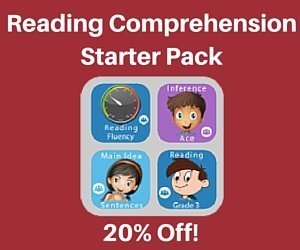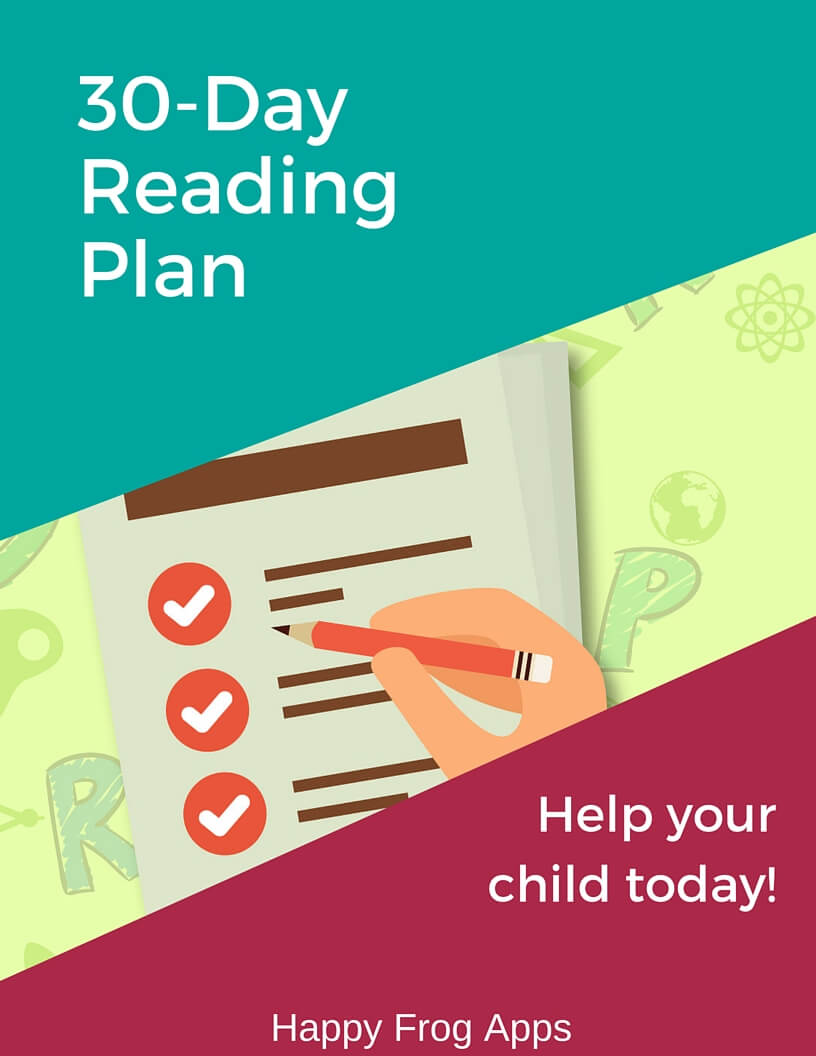Category: Uncategorized
Parent Super Strategy #2

Hello again, today’s super-strategy is all about success.
How do YOU feel if you fail and fail and fail at something. Great? Probably not. Now, think about how your child feels about reading… Great? Probably not!
Now think about how you feel when you CAN do something. It feels fantastic, right?
Your job is to ensure that your child feels successful after reading time. Every time. Let me say that again. After reading, your child should feel GREAT, EVERY time. You need to make reading a fun activity for your child — because no-one wants to do things they suck at.
How do you make that happen?
The first step is to make sure your expectations are realistic. You know where you want your child to BE, but the most they can do is move on one step from where they ARE now. Make sure your expectations are reasonable.
The next step is to make sure that the reading task or activity suits your reader’s current skill level.
A simple metric to use is 80%. On any task, whether that is reading aloud, answering questions, using an app, or doing any sort of reading activity, your child should be operating at 80% success. 4 out of every 5 attempts should be successful.
If your child is doing worse, then the task is too hard. Ease it up. If your child is always scoring 100%, then you are ready for the next level.
One of the (many) reasons that apps are great for reading-improvement is that skill level can be tracked by the app. All of our Happy Frog apps monitor your child’s progress and levels unlock when your child is ready (scores 80% or above). Our levels are carefully graded so that skills build incrementally with tons of success along the way.
So, what are you going to do today to ENSURE your child feels successful?
Parent Super Strategy #1

There are simple ways YOU can change to make reading easier with your child. Over the next few weeks, I’m going to give you 5 simple “Super Strategies” that YOU can do to change how your child approaches reading.
Let’s start with Strategy #1: Give Choice
If your child struggles with reading, then he or she is probably an expert at avoiding reading. Reading time may have become a battle.A simple way to get daily reading happening is to give your child a choice — a real choice, not just this book or that book.
Each day let your child choose what they want to do for their 15 minutes of reading. Here are some ideas:
– Books that your child has chosen from the library (not ones chosen by you!)
– Quality reading apps
– Audio books
– Online reviews or descriptions of your child’s favorite game (Minecraft, Mario, etc.)
– An article related to a favorite hobby (soccer, hockey, cooking, crafting)
– Any of the activities from our Fun Reading Activities Guide
– Or an absolutely free choice – anything as long as it has words!
Children love choice, and if you enthusiastically embrace the choice they make, gradually reading time will become fun. As that happens, you can guide the options. Perhaps one day in three, you choose the book/app/activity.
Your most important step today, is to get some choices ready. If you are in a hurry, download our app Starter Pack – perfect for kids who need a little motivation to read. Each app targets a key reading comprehension skill that will make them shine in the classroom.
This bundle of 4 apps meets all the criteria for high-quality educational apps, and you get 20% off the price of buying the apps individually. Best of all, you’ll have instant choice – and what kid doesn’t want to use the iPad?
Remember: Give your child CHOICE
Math Word Problems Are Tough… Or Are They?

Math word problems are tough!
Ummm… Actually, no, they’re not. There’s a simple strategy you can learn and apply to any math word problem.
If your child struggles with math word problems, you need to teach them this strategy. If you do, they’ll be way ahead of other kids who just give up!
It’s a simple 5-step process. Let’s use the following simple problem as an example.
On a school trip to a farm, Jackie saw 14 sheep. 3 of them were baby sheep. How many adult sheep did she see?
1. First, identify what information you are trying to find out. i.e. what answer are you looking for?
In our example, we want to find out how many adult sheep Jackie saw.
2. Next, identify what information you already know from the problem. By their nature, math word problems give you information to work with.
In our example we are told:
– how many sheep Jackie saw (14).
– how many baby sheep Jackie saw (3).
3. Next, you draw a model to help you “see” the problem. Here’s a screenshot from the app showing this step of the problem. Several levels of the app work on helping your learner build an appropriate model.

4. Finally, you figure out how to identify the unknown piece. In this example, the following equation will find the solution.
14 – 3 = ?
5. Lastly, find the solution and put your answer in a sentence.
Jackie saw 11 adult sheep.
And you are done!
The same process can be applied to any word problem. Teaching this process to your learner gives them a way to manage the problem and find the answer.
You can give your child a lot of practice at each step and then combine the steps to deal with complete problems. Or you can just grab our Math Word Problems app.
Unique on the app store, this app helps kids understand HOW to do math word problems step-by-step.
We start with the absolute basics, and by the end your child will know how to interpret and complete one-step math word problems using addition and subtraction.
Each level in Math Word Problems targets a specific step in working through a math word problem. Once proficient, these skills are combined as your child works through complete problems.
Let your child have the feeling of math success. Grab our Math Word Problems app today!


